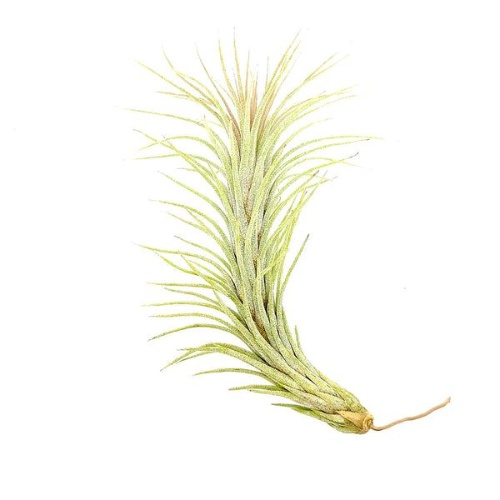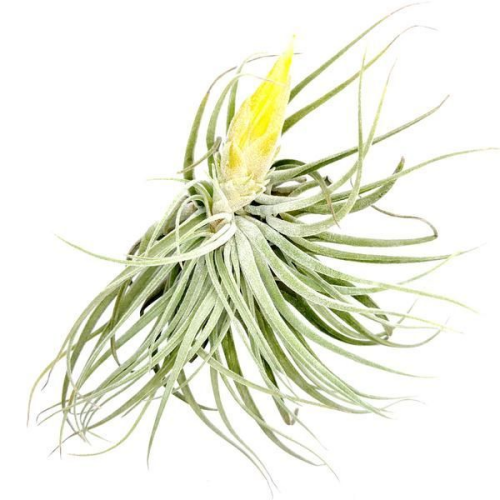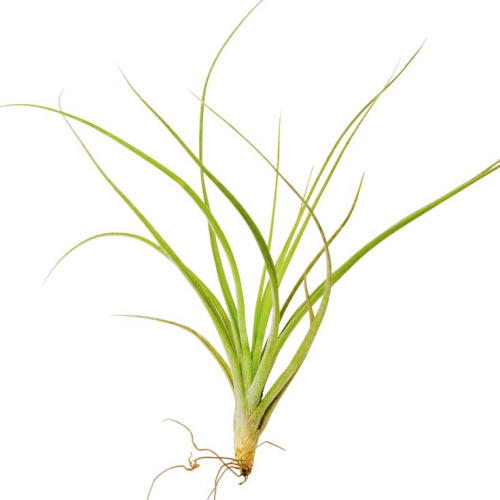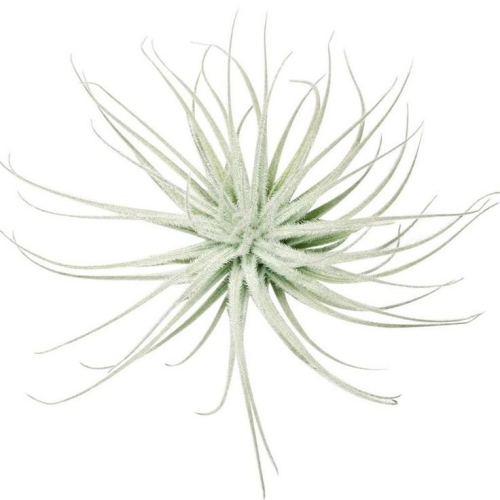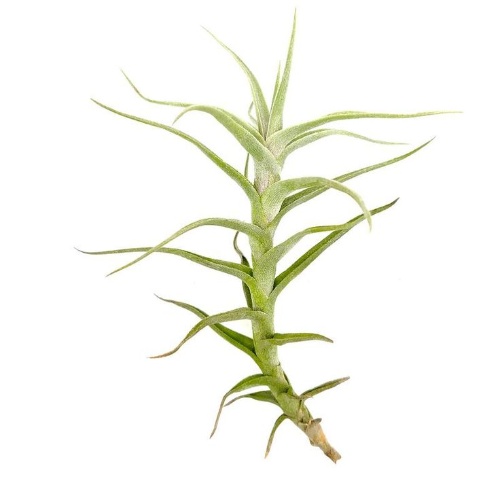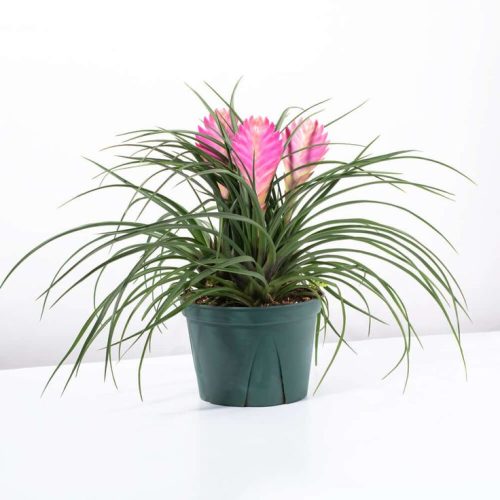Tillandsia Brachycaulos
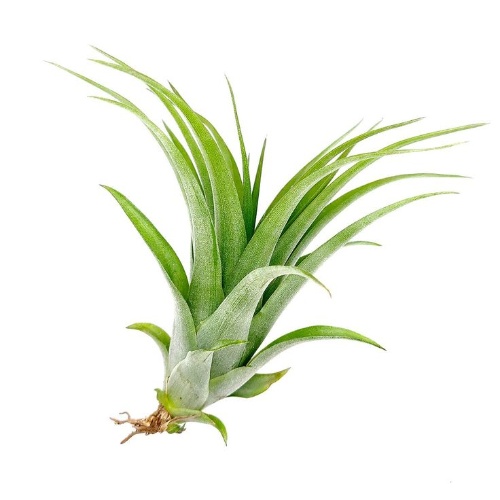
- Botanical Name: Tillandsia brachycaulos
- Family Name: Bromeliaceae
- Kakau: 9-11 Inch
- Temeprature: 10°C~32°C
- Others: Likes moist, airy, light, diffused.
Tirohanga whānui
Whakaahuatanga Hua
Tillandsia Brachycaulos’ Colorful Conquest of the Air Plant World
Ko Tillandsia Brachyculos, ko te Haru o nga Rongonui o Amerika Central me Venezuela, he Maori no nga rohe penei i Mexico, Honduras, Guatemala, me El Salvador.
Rauemi rau o Tillandsia Brachyculos
This species is renowned for its distinctive appearance, featuring long, slender leaves that curl and twist, resembling snakes, which is why it’s named after the mythical Medusa. The leaves are typically gray-blue and arranged in a rosette pattern, reaching up to 25 centimeters in length.
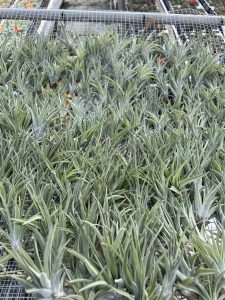
Tillandsia Brachycaulos
Nga waahanga Inflorescence o Tillandsia Brachyculos
Tuhinga o mua Tillandsia Brachycaulos He pua ngongo me te puru-whero, te tikanga ka pua i te timatanga o te raumati. I mua i te pua, ka pupuhi nga rau i te whero whero, ka kumea nga papura papura ka puawai i te pokapū o nga rau.
Tillandsia Brachycaulos, also known as the short-stemmed air plant, turns red before flowering mainly due to the accumulation of anthocyanins and photosynthesis under ample light conditions, which leads to a change in leaf color. This color change is not only a physiological response but also an ecological adaptation strategy to attract pollinators such as insects, helping the plant overcome the disadvantage of small flowers being less likely to be pollinated. Additionally, the leaf color of Brachycaulos changes with temperature variations, turning fully red in low temperatures and green in high temperatures, demonstrating the plant’s adaptability to environmental temperature changes. Therefore, this reddening phenomenon is a comprehensive reflection of Tillandsia Brachycaulos’ physiological functions, ecological interactions, and environmental adaptability.
Tillandsia Brachycaulos: The Red-Stemmed Enigma’s Environmental Demands
-
Taimāmā: Ko tenei tipu o te hau e hiahiatia ana he maama engari he maama, te karo i te ra tika, ina koa i te ahiahi. Mena kaore i te rahi te maama taiao i roto i nga whare o roto, ka taea te whakamahi i nga puna maamaa, me te iti ake o te 10 haora o te rama auaha.
-
Pāmahana: Ko tenei tipu o te hau, he Maori ki nga rohe mahana o Amerika me Amerika ki te Tonga, ehara i te huka -rua. Ka taea te tu ki te pāmahana kia rite ki te iti o te 30 nekehanga Fahrenheit (-1 tohu Celrenheit (-1 tohu Celresit), engari me karo te pāmahana makariri. Ko te awheingatanga pāmahana tino i waenga i te 65 me te 90 nga nekehanga FAHRENHEIT (18-32 nga nekehanga Celsius).
-
Pīpīwai: He tipu hau e pai ana ki te haumākū me te whai i nga taiao me te 60% ki te 90% te makuku, penei i te kaukaukau me nga kihini. Mena kaore i te kaha te taiao, me te whakainu i nga wa katoa, i waenga ranei i waenga i nga riihi e tika ana.
-
Wai: Ahakoa ko nga tipu o te hau ka uru ki te wai me nga matūkai na roto i o ratou rau, me horoi ano hoki ratou. E taunakitia ana kia Soklandsia Brachycaulos i te 10 meneti i te wiki kotahi, ka huri ki te maroke.
-
Tongi: Ahakoa kaore e hiahia ana nga tipu o te hau i te whakatipu, te whakamahi i te kohua wai-wai-motuhake ranei i te wiki i te raumati i te raumati ka taea te whakatairanga i te tipu.
-
Te oneone me te pakiaka: Ano he Epiphyte, kaore tenei tipu e hiahia ki te oneone ka taea te whakanoho ki tetahi papa ka taea te tautoko i a raatau, penei i nga pukapuka, taera, he kohua iti ranei me te wai.
-
Puakanga: I mua i te pua, i te rau o Tillandsia Brachycaulos hurihia te whero, a ka papura papura ka pua i te pokapū o nga rau.
Ko te whakatipu i a TIllandsiaCalos e hiahia ana kia karo i te ra tika, ina koa i te ahiahi, ki te aukati i te paru. Kia mau tonu te pāmahana i waenga i te 15-25 ° C me te makuku i te 60-90%. Whakanohia te tipu o te Wiki mo te 10 meneti me te whakarite kia maroke rawa te pirau. A ape i te whakainu po. Whakamahia nga maniua rewa i te wa e tipu haere ana ki te whakapiki ake i te tipu. Whakarite i te tohatoha hau pai me te whakarato tautoko tika mo te tipu. Kia mataara mo nga pepeke penei i nga aphids me te aulybugs. Ma te whai i enei aratohu, ka tipu a Tillandsias o TillandsiasAculos o TillandsiasAculos i tona ataahua ataahua.





